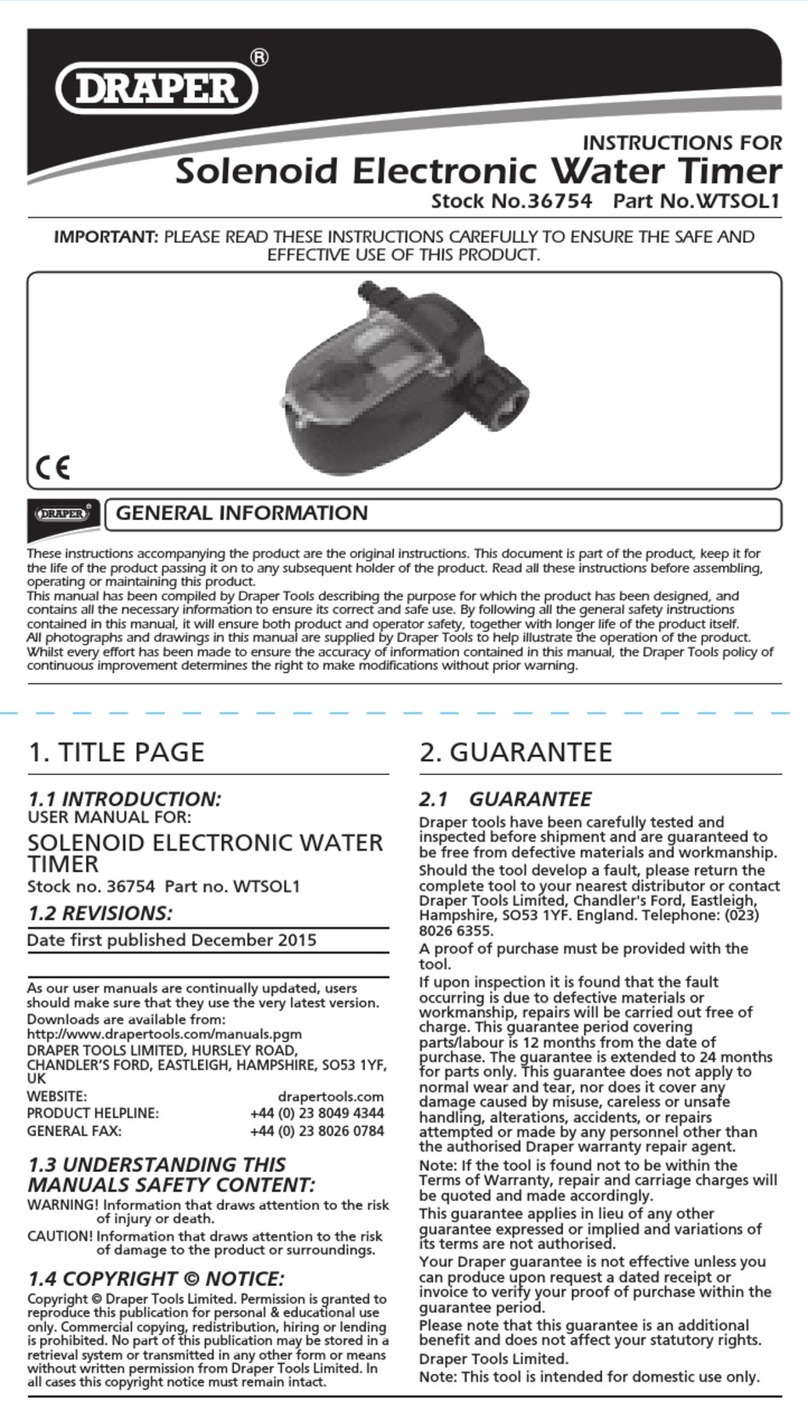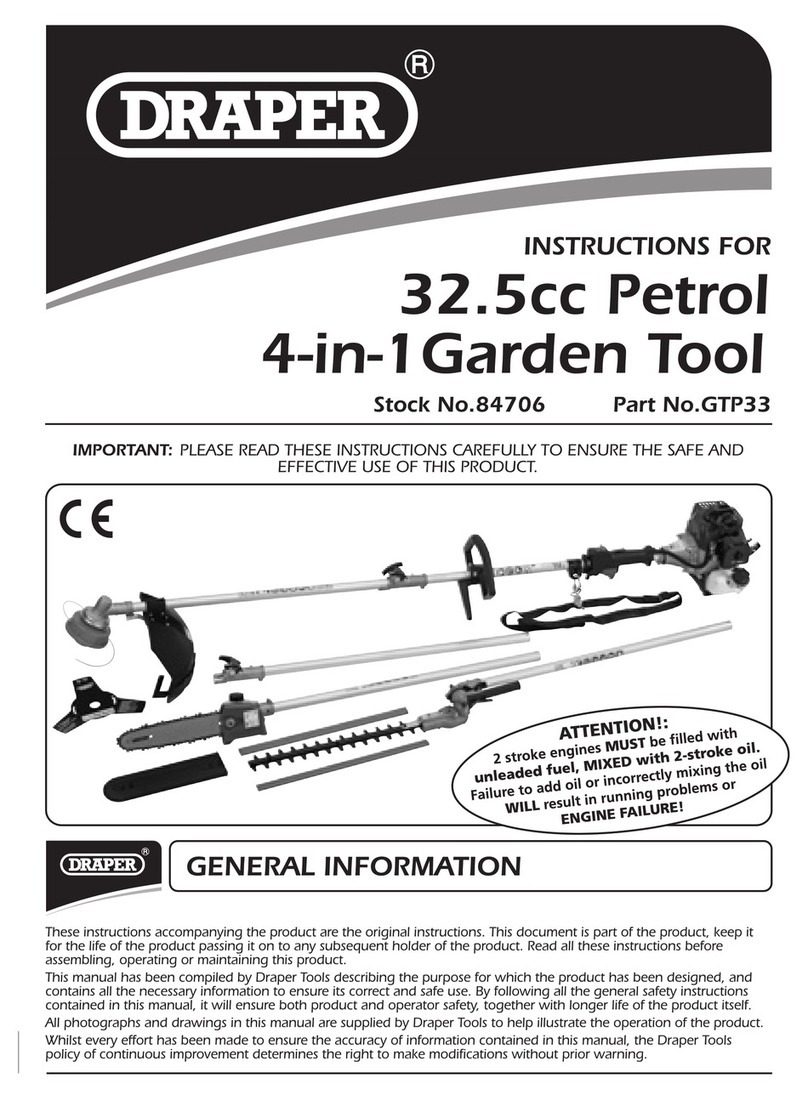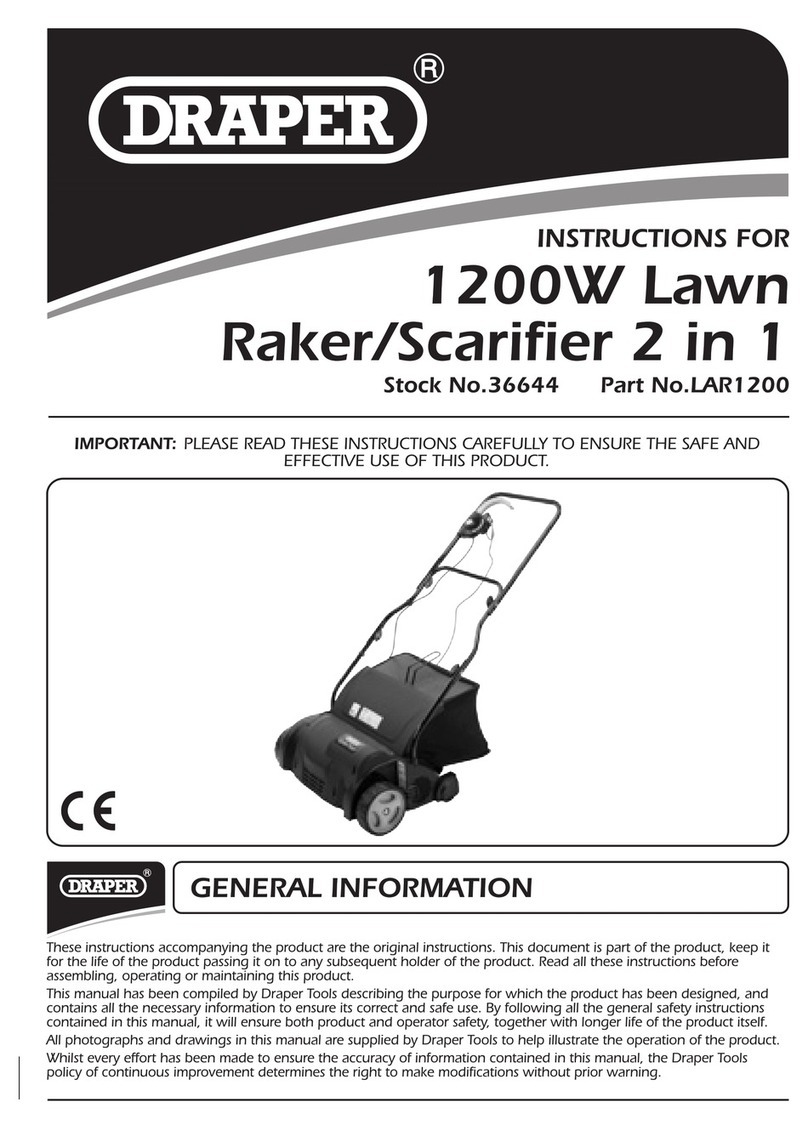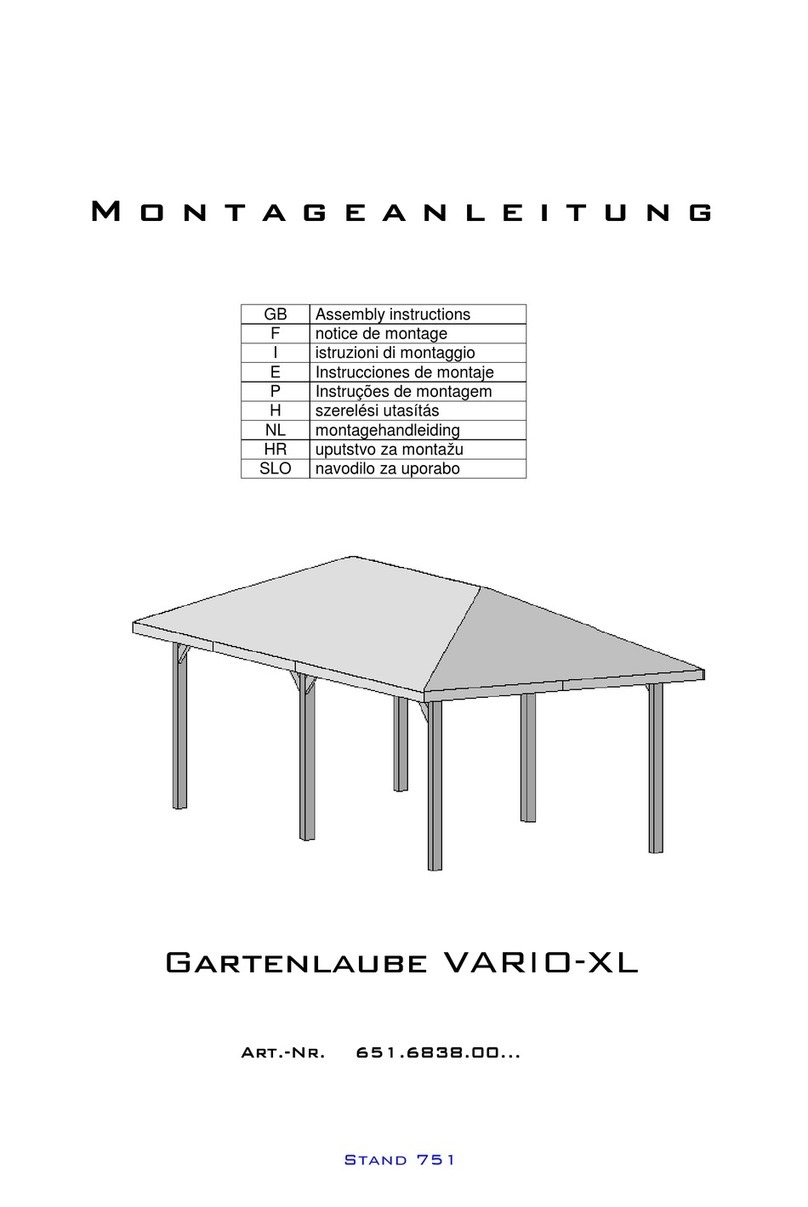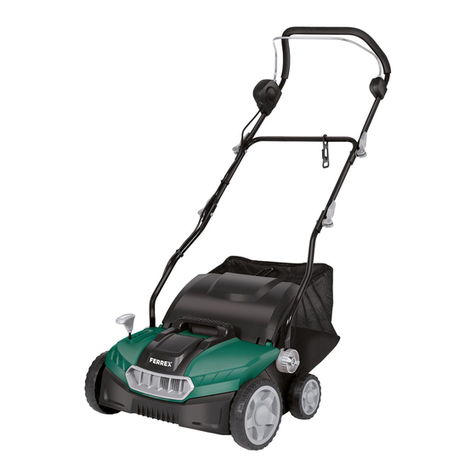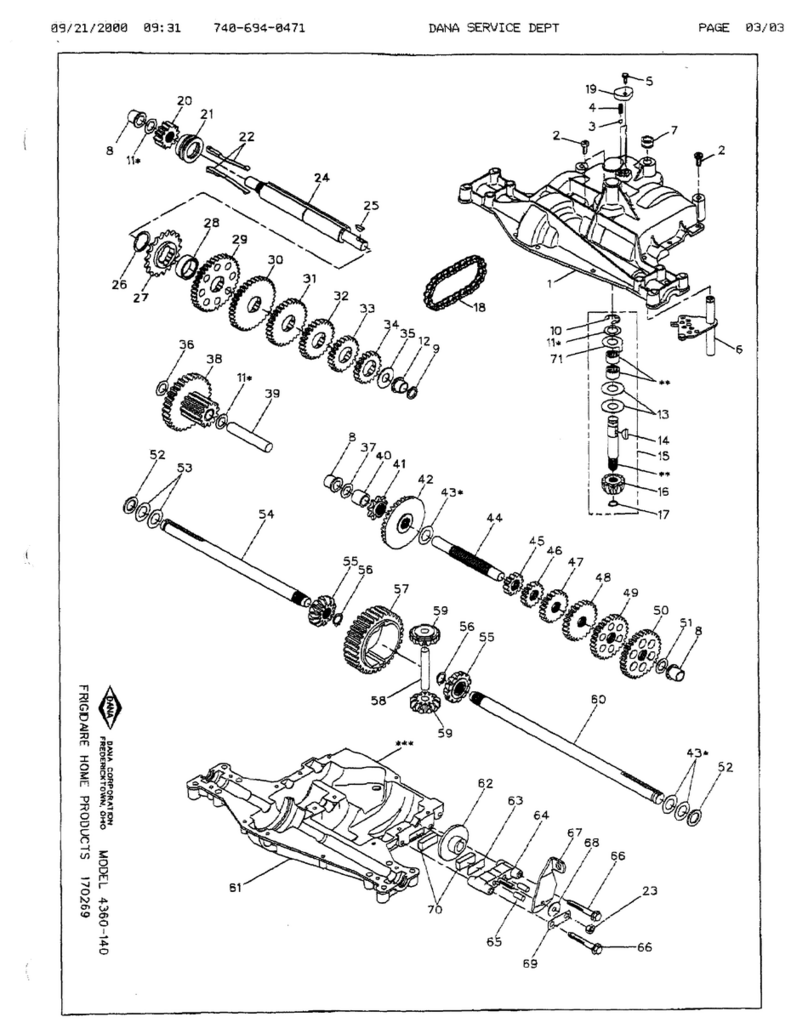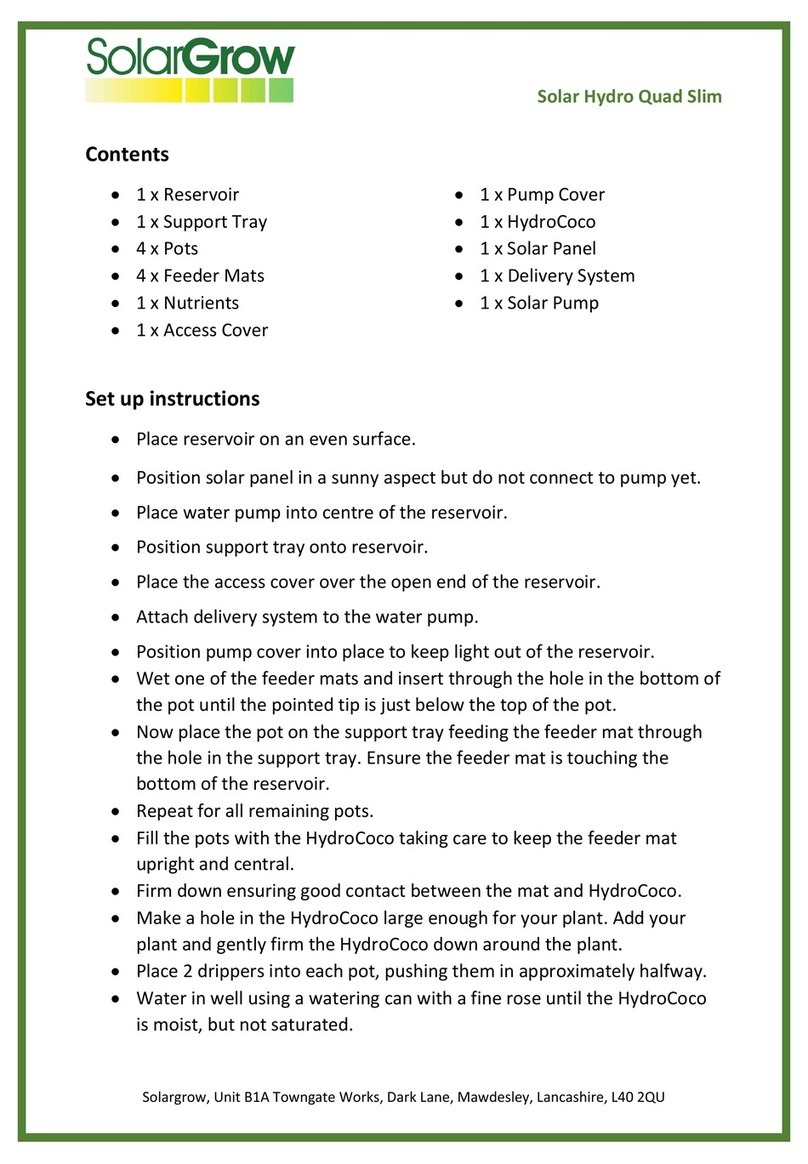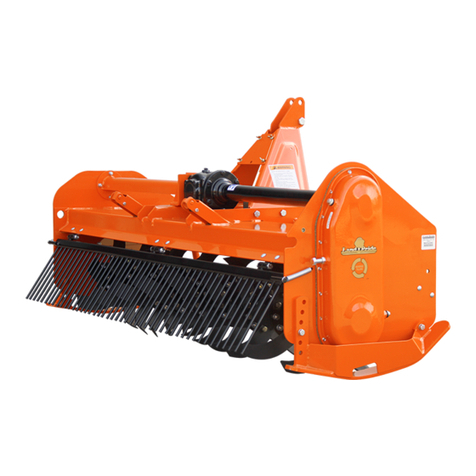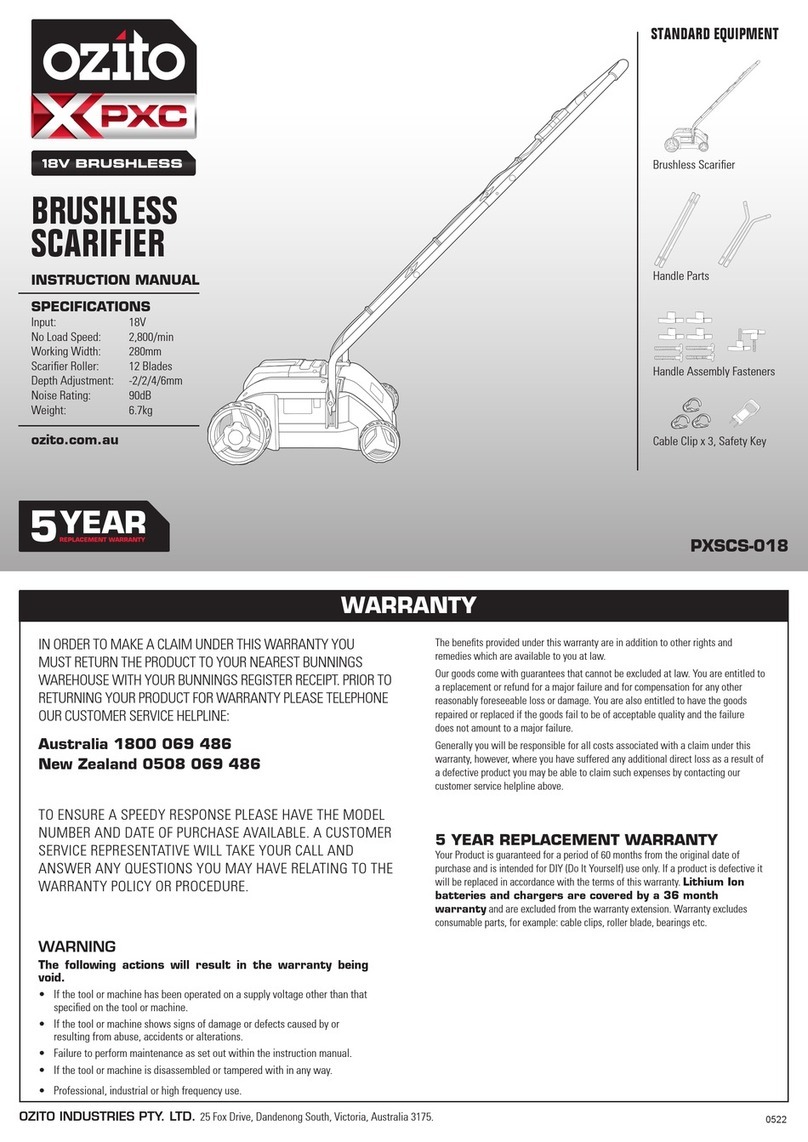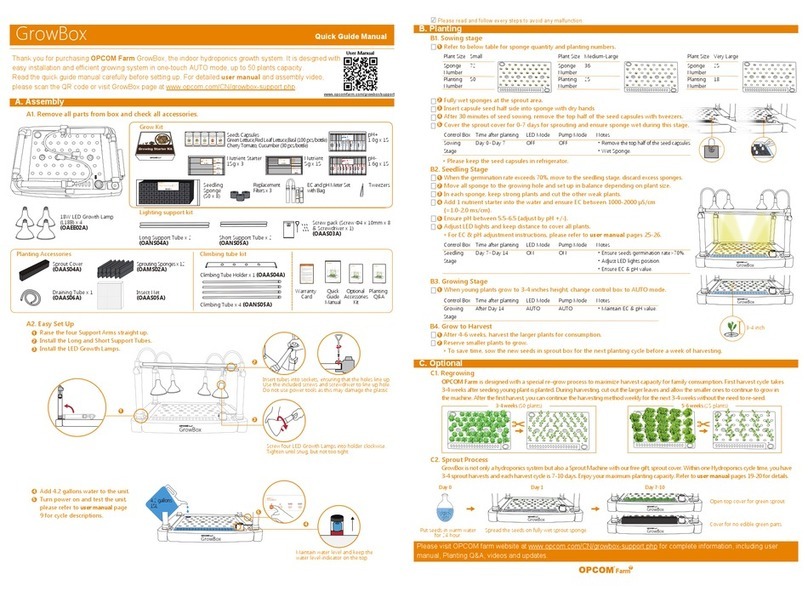Draper GTP33 User manual

These instructions accompanying the product are the original instructions. This document is part of the product, keep
it for the life of the product passing it on to any subsequent holder of the product. Read all these instructions before
assembling, operating or maintaining this product.
This manual has been compiled by Draper Tools describing the purpose for which the product has been designed,
and contains all the necessary information to ensure its correct and safe use. By following all the general safety
instructions contained in this manual, it will ensure both product and operator safety, together with longer life of the
product itself.
AlI photographs and drawings in this manual are supplied by Draper Tools to help illustrate the operation of the
product.
Whilst every effort has been made to ensure the accuracy of information contained in this manual, the Draper Tools
policy of continuous improvement determines the right to make modifications without prior warning.
84706
PETROL
4-IN-1
GARDEN TOOL
ATTENTION!:
2 stroke engines MUST be filled with
unleaded fuel, MIXED with 2-stroke oil.
Failure to add oil or incorrectly mixing the oil
WILL result in running problems or
ENGINE FAILURE!

1. TITLE PAGE
1.1 INTRODUCTION:
USER MANUAL FOR: Petrol 4-in-1 Garden Tool
Stock No: 84706
Part No: GTP33
As our user manuals are continually updated, users should make sure that they use
the very latest version.
Downloads are available from: http://drapertools.com/manuals
Draper Tools Limited
Hursley Road
Chandler’s Ford
Eastleigh
Hampshire
SO53 1YF
UK
Website: drapertools.com
Product Helpline: +44 (0) 23 8049 4344
General Fax: +44 (0) 23 8026 0784
1.3 UNDERSTANDING THIS MANUALS SAFETY CONTENT:
WARNING! – Information that draws attention to the risk of injury or death.
CAUTION! – Information that draws attention to the risk of damage to the product or
surroundings.
1.4 COPYRIGHT © NOTICE:
Copyright © Draper Tools Limited.
Permission is granted to reproduce this publication for personal and educational use
only. Commercial copying, redistribution, hiring or lending is prohibited.
No part of this publication may be stored in a retrieval system or transmitted in any
other form or means without written permission from Draper Tools Limited.
In all cases this copyright notice must remain intact.
1.2 REVISIONS:
Date first published August 2018.

2.1 CONTENTS
Page content Page
1. TITLE PAGE
1.1 INTRODUCTION ............................. 2
1.2 REVISION HISTORY ....................... 2
1.3 UNDERSTANDING THIS MANUAL. 2
1.4 COPYRIGHT NOTICE ..................... 2
2. CONTENTS
2.1 CONTENTS ..................................... 3
3. WARRANTY
3.1 WARRANTY..................................... 4
4. INTRODUCTION
4.1 SCOPE ............................................ 5
4.2 SPECIFICATION.............................. 5
4.3 HANDLING & STORAGE................. 6
5. HEALTH & SAFETY INFORMATION
5.1 GENERAL SAFETY INSTRUCTIONS
FOR POWER TOOL USE................ 7
6. TECHNICAL DESCRIPTION
6.1 IDENTIFICATION........................... 11
– Tree pruning attachment............. 12
– Hedge trimming attachment........ 12
– Grass trimmer/brush cutter ......... 13
7. UNPACKING & CHECKING
7.1 PACKAGING.................................. 14
7.2 WHAT’S IN THE BOX .................... 14
8. PREPARING THE 2-STROKE MOTOR UNIT
8.1 FUELLING...................................... 15
8.2 HARNESS ATTACHMENT ............ 15
9. PREPARING THE ATTACHMENTS
9.1 FITTING AND REMOVING
THE CHAIN AND GUIDE BAR ...... 16
9.2 TENSIONING THE CHAIN ............ 16
9.3 CHAIN OIL ..................................... 17
9.4 FITTING THE BRUSH
CUTTER/GRASS ..............................................
TRIMMER GUARD ........................ 17
9.5 FITTING THE COMPLETE SPOOL ..
ASSEMBLY.................................... 18
9.6 FITTING THE BRUSH
CUTTING BLADE .......................... 18
10. STARTING THE 2-STROKE MOTOR UNIT
10.1 STARTING THE ENGINE .............. 19
11.
OPERATING THE TREE PRUNING
ATTACHMENT
11.1 ADJUSTING THE OIL FLOW ........ 20
11.2 WORKING TECHNIQUES........... 20
– Delimbing .................................. 20
11.3 HAZARDS.................................... 21
– Kickback.................................... 21
– Pull in ........................................ 21
12. USING THE EXTENSION POLE
12.1 USING THE 700mm
EXTENSION POLE........................ 22
13. OPERATING THE HEDGE TRIMMING
ATTACHMENT
13.1 ADJUSTING THE BLADE ANGLE. 23
13.2 WORKING TECHNIQUES ............. 23
– Ground clearance........................ 23
– Vertical cutting (along side)......... 24
– Vertical cutting (at a distance)..... 24
– Hedge topping
(above head height) .................... 24
– Horizontal cutting ........................ 24
14. OPERATING THE BRUSH CUTTER/GRASS ..
TRIMMER
14.1 USING THE GRASS TRIMMER .... 25
14.2 USING THE BRUSH CUTTER ...... 25
15. MAINTENANCE – 2-STROKE MOTOR UNIT
15.1 CLEANING THE AIR FILTER ........ 26
15.2 SPARK PLUG MAINTENANCE ..... 26
15.3 ENGINE SPEED IDLE
ADJUSTMENT ............................... 27
15.4 REPLACING THE FUEL FILTER... 27
16. MAINTENANCE – ATTACHMENTS
16.1 CHAIN MAINTENANCE................. 28
16.2 FITTING AND REMOVING
THE CHAIN AND GUIDE BAR
.................(see section 9.1, page 16).
16.3 TENSIONING THE CHAIN
.................(see section 9.2, page 16).
16.4 CHAIN OIL
.................(see section 9.3, page 17).
16.5 GEARBOX LUBRICATION ............ 28
16.6 BLADE CLEANING ........................ 28
16.7 MAINTAINING THE SPOOL .......... 28
16.8 REMOVING THE COMPLETE
SPOOL ASSEMBLY ...................... 29
16.9 FITTING THE COMPLETE SPOOL ..
ASSEMBLY
.................(see section 9.5, page 18).
17. TROUBLESHOOTING
17.1 TROUBLESHOOTING –
2-STROKE MOTOR UNIT ............. 30
17.2 TROUBLESHOOTING –
TREE PRUNING ATTACHMENT .. 32
17.3 TROUBLESHOOTING – HEDGE .....
TRIMMING ATTACHMENT ........... 32
18. ACCESSORIES
18.1 ACCESSORIES GUIDE................. 33
19. DISPOSAL
19.1 DISPOSAL ..................................... 34
20. EXPLANATION OF SYMBOLS
20.1 EXPLANATION OF SYMBOLS...... 35
DECLARATION OF CONFORMITY ........ Enclosed
Page content Page
2. CONTENTS
2. CONTENTS
- 3-

3. WARRANTY
3. WARRANTY
3.1 WARRANTY
Draper tools have been carefully tested and inspected before shipment and are guaranteed to be
free from defective materials and workmanship.
Should the tool develop a fault, please return the complete tool to your nearest distributor or
contact:
Draper Tools Limited, Chandler's Ford, Eastleigh, Hampshire, SO53 1YF. England.
Telephone Sales Desk: (023) 8049 4333 or:
Product Helpline (023) 8049 4344.
A proof of purchase must be provided.
If upon inspection it is found that the fault occurring is due to defective materials or workmanship,
repairs will be carried out free of charge. This warranty period covering labour is 12 months from
the date of purchase except where tools are hired out when the warranty period is 90 days from
the date of purchase. The warranty is extended to 24 months for parts only. This warranty does
not apply to any consumable parts, any type of battery or normal wear and tear, nor does it cover
any damage caused by misuse, careless or unsafe handling, alterations, accidents, or repairs
attempted or made by any personnel other than the authorised Draper warranty repair agent.
Note: If the tool is found not to be within the terms of warranty, repairs and carriage charges will
be quoted and made accordingly.
This warranty applies in lieu of any other warranty expressed or implied and variations of its
terms are not authorised.
Your Draper warranty is not effective unless you can produce upon request a dated receipt or
invoice to verify your proof of purchase within the warranty period.
Please note that this warranty is an additional benefit and does not affect your statutory rights.
Draper Tools Limited.
- 4-

4. INTRODUCTION
4.1 SCOPE
This 2 stroke 4-in-1 garden tool is designed exclusively for connection to a range of Draper Tools'
accessories [detailed in this documentation] enabling the operator to perform a range of
maintenance tasks in and around the garden.
4.2 SPECIFICATION
Stock no .............................................................................................................................84706
Part no.............................................................................................................................. GTP33
Motor unit:
Maximum engine performance.......................................................................................... 1,0kW
Engine type .....................................................................................................................2-stroke
Fuel tank capacity ...........................................................................................................900cm³
Engine displacement ......................................................................................................32.5cm³
Fuel/2-stroke oil mix .............................................................................................................25:1
Maximum engine performance...................................................................................... 1.000kW
Engine speed at idle...................................................................................................... 3000rpm
Engine speed (rotational frequency)2.........................................................................7,500min-1
Engine speed (rotational frequency)3.........................................................................3,000min-1
Fuel consumption at maximum engine performance .................................................. 503g/kWh
Sound pressure level (A-weighted LpAav)1................................................................. 93.7dB(A)
Sound power level (A-weighted LWAav)1...................................................................110.5dB(A)
Single value noise level2................................................................................................114dB(A)
Vibration level3................................................................................................................7.29m/s²
Weight (motor & grass trimmer attachment only - no fuel).....................................................6kg
Tree pruning attachment:
Chain speed ................................................................................................................... 15m/sec
Cutting length ...................................................................................................................235mm
Chain type ...................................................................................................... Oregon 91PJ039X
Toothing .......................................................................................................................7T – 0.375
Oil tank capacity.................................................................................................................150ml
Noise level.............................................................................................93.7dB(A) [K=3,0 dB(A)]
Vibration – full throttle................................................................................ 9.23m/s² [K=1,5 m/s²]
Vibration – idling speed ........................................................................... 6.954m/s² [K=1,5 m/s²]
Brush cutter/grass trimmer attachment:
Cutting diameter (blade)...................................................................................................255mm
Cutting diameter (nylon line) ............................................................................................440mm
Cord diameter....................................................................................................................2.5mm
Overall cord length ..............................................................................................................
2.5M
Cord extension ............................................................................................................... Tap’n go
Noise level.............................................................................................94.5dB(A) [K=3,0 dB(A)]
Vibration – full throttle................................................................................ 9.23m/s² [K=1,5 m/s²]
Vibration – idling speed ............................................................................... 3.2m/s² [K=1,5 m/s²]
Hedge trimmer attachment
Max. branch size ................................................................................................................22mm
Blade length .....................................................................................................................440mm
Cutting length ...................................................................................................................380mm
Noise level.............................................................................................94.5dB(A) [K=3,0 dB(A)]
Vibration – full throttle................................................................................ 9.23m/s² [K=1,5 m/s²]
Vibration – idling speed ............................................................................... 3.2m/s² [K=1,5 m/s²]
1 In accordance to BS EN ISO 22868.
2 A-weighted sound pressure level in accordance to 2000/14/EC.
3 In accordance to BS EN ISO 22867.
4. INTRODUCTION
- 5-

4.3 HANDLING & STORAGE
– Care must be taken when handling this product.
●Dropping this power tool could have an effect on its accuracy and could also result in personal
injury. This product is not a toy and must be respected.
– Environmental conditions can have a detrimental effect on this product if neglected.
●Exposure to damp air can gradually corrode components.
●If the product is unprotected from dust and debris, components will become clogged.
●If not cleaned and maintained correctly or regularly, the machine will not perform at its best.
* Continuous A-Weighted Sound Pressure Level at the workstation in accordance to prEN ISO 15744:1999
and declared according to EN ISO 4871.
** A-Weighted Sound Power Level in accordance to prEN ISO 15744:1999 and declared according to EN ISO 4871.
4. INTRODUCTION
- 6-

When using any type of power tool there are steps that should be taken to make sure that you, as
the user, remain safe.
Common sense and a respect for the tool will help reduce the risk of injury.
5.1 GENERAL SAFETY INSTRUCTIONS FOR POWER TOOL USE
5. HEALTH AND SAFETY INFORMATION
Most important: You must know how to safely start and stop this machine, especially in an
emergency.
Keep the work area tidy and clean. Attempting to clear clutter from around the machine during use
will reduce your concentration. Mess on the floor creates a trip hazard. Any liquid spilled on the floor
could result in you slipping.
Find a suitable location. If the machine is bench mounted, the location should provide good natural
light or artificial lighting as a replacement. Avoid damp and dusty locations as it will have a negative
effect on the machine’s performance. If the machine is portable do not expose the tool to rain. In all
cases do not operate power tools near any flammable materials.
Keep bystanders away. Children, onlookers and passers by must be restricted from entering the
work area for their own protection. The barrier must extend a suitable distance from the tool user.
Unplug and house all power tools that are not in use. A power tool should never be left unattended
while connected to the power supply. They must be housed in a suitable location, away locked up
and from children.
Do not overload or misuse the tool. All tools are designed for a purpose and are limited to what
they are capable of doing. Do not attempt to use a power tool (or adapt it in any way) for an
application it is not designed for. Select a tool appropriate for the size of the job. Overloading a tool
will result in tool failure and user injury. This covers the use of accessories.
Dress properly. Loose clothing, long hair and jewellery are all dangerous because they can become
entangled in moving machinery. This can also result in parts of body being pulled into the machine.
Clothing should be close fitted, with any long hair tired back and jewellery and neck ties removed.
Footwear must be fully enclosed and have a non-slip sole.
Wear personal protective equipment (PPE). Dust, noise, vibration and swarf can all be dangerous
if not suitably protected against. If the work involving the power tool creates dust or fumes wear a
dust mask. Vibration to the hand, caused by operating some tools for longer periods must be
protected against. Wear vibration reducing gloves and allow long breaks between uses. Protect
against dust and swarf by wearing approved safety goggles or a face shield. These are some of the
more common hazards and preventions, however, always find out what hazards are associated with
the machine/work process and wear the most suitable protective equipment available.
Do not breathe contaminated air. If the work creates dust or fumes connect the machine (if
possible) to an extraction system either locally or remotely. Working outdoors can also help if
possible.
Move the machine as instructed. If the machine is hand held, do not carry it by the power supply
cable. If the product is heavy, employ a second or third person to help move it safely or use a
mechanical device. Always refer to the instructions for the correct method.
Do not overreach. Extending your body too far can result in a loss of balance and you falling. This
could be from a height or onto a machine and will result in injury.
Maintain your tools correctly. A well maintained tool will do the job safely. Replace any damaged
or missing parts immediately with original parts from the manufacturer. As applicable keep blades
sharp, moving parts clean, oiled or greased, handles clean and emergency devices working.
Warning!
●Read all safety warnings and all instructions. Failure to follow the warnings and instructions
may result in electric shock, fire and/or serious injury.
●The term "power tool" in the warnings refers to your mains operated (corded) power tool or
battery-operated (cordless) power tool.
- 7-

5. HEALTH AND SAFETY INFORMATION
Wait for the machine to stop. Unless the machine is fitted with a safety brake, some parts may
continue to move due to momentum. Wait for all parts to stop, then unplug it from the power supply
before making any adjustments, carrying out maintenance operations or just finishing using the tool.
Remove and check setting tools. Some machinery requires the use of additional tools or keys to
set, load or adjust the power tool. Before starting the power tool always check to make certain they
have been removed and are safely away from the machine.
Prevent unintentional starting. Before plugging any machine in to the power supply, make sure the
switch is in the OFF position. If the machine is portable, do not hold the machine near the switch and
take care when putting the machine down, that nothing can operate the switch.
Carefully select an extension lead. Some machines are not suitable for use with extension leads. If
the tool is designed for use outdoors, use an extension lead also suitable for that environment. When
using an extended lead, select one capable of handling the current (amps) drawn by the machine in
use. Fully extend the lead regardless of the distance between the power supply and the tool. Excess
current (amps) and a coiled extension lead will both cause the cable to heat up and can result in fire.
Concentrate and stay alert. Distractions are likely to cause an accident. Never operate a power tool
if you are under the influence of drugs (prescription or otherwise), including alcohol or if you are
feeling tired. Being disorientated will result in an accident.
Have this tool repaired by a qualified person. This tool is designed to conform to the relevant
international and local standards and as such should be maintained and repaired by someone
qualified, using only original parts supplied by the manufacturer. This will ensure the tool remains safe
to use.
5.2 ADDITIONAL SAFETY INSTRUCTIONS FOR 4-IN-1 PETROL
GARDEN TOOL USE
WARNING! For your safety, please read and understand these instructions before assembling,
operating or maintaining this machine.
WARNING! Read the instructions carefully.
Never attempt to modify or operate a modified machine. Fully assemble this machine, including all
relevant guards, before operating.
Do not operate this machine without being completely familiar with the safety features and how to
operate them.
Never operate this machine if the stop switch is faulty or not functioning.
Never operate this machine while tired, ill or under the influence of drugs.
DANGER! Keep out of the reach of children.
Refer to the instructions supplied with the attachment. Fully read and understand before
attempting to assemble, operate or maintain the attachment.
Never allow people unfamiliar with these instructions to operate this machine. Local regulations
may restrict the age of the operator.
Prior to each use, inspect the machine for signs of damage. Make sure the safety features are
present and functioning and that all visible nuts, bolts and screws remain tight. Vibration from
normal use can cause them to loosen over time.
Never operate this machine with defective or missing guards.
WARNING! Use of this product can pose a danger to wildlife. Before
attempting to use this machine, check the area, particularly long grass and
under bushes for signs of life: if necessary relocate.
NOTE: Not all animals will be deterred by the noise of the product alone.
Do not operate this machine near animals or bystanders.
Check the attachment is correctly fitted to the machine before attempting to start the engine.
- 8-

5. HEALTH AND SAFETY INFORMATION
CAUTION! As the user you are responsible for any injury to people or damage to property.
Never leave this machine running when not in use or leave the it unattended during use.
WARNING! During use the engine gets very hot. Do not touch it, especially the exhaust.
Always be aware of your surroundings, staying alert for possible hazards that you may not hear
over the noise of the engine.
Always wear appropriate PPE [Personal Protective Equipment].
– Always wear suitable eye/face protection.
– Ear defenders must be worn to prevent damage to your hearing.
– Gloves to help reduce vibration fatigue.
– Always wear safety footwear.
5.3 HEALTH AND SAFETY INFORMATION CONCERNING THE USE OF
FUELS
Fuels are inflammable and explosive. Reduce the risk of explosion and fire by:
– Turning off and cooling the motor down before filling the tank with fuel.
– Refraining from smoking and starting open fires when handling fuels.
– Storing and mixing fuels in approved and correspondingly labelled canisters.
– Storing fuels in closed containers. Keeping in mind that fuels may evaporate at room
temperature and collect on the floor of closed rooms (risk of explosion).
– Start the device at least nine metres away from the machine.
Fuels are toxic, they contain substances that have an immediate toxic effect and may cause
permanent damage to your health.Take all precautionary measures to prevent your body
from absorbing any of these substances:
– Tank and siphon fuels only outdoors or in well-ventilated rooms.
– Do not inhale fuel fumes.
– Avoid contact with eyes and skin.
– Wear gloves when transferring fuel.
– When fuel has come into contact with your clothes, change them immediately. Clean your
clothes before putting them back on.
– Store fuels out of the reach of children.
When handled inappropriately, fuels may cause damage to the environment:
– Transfer fuel carefully. Fuel must never trickle into the ground or the sewage system.
– Dispose of any remaining fuel in an appropriate manner. Never dispose of fuel with regular
household waste.
– Fuels may be stored only for a limited time. Purchase only such quantities that can be used up
within a few months.
- 9-

6. TECHNICAL DESCRIPTION
6.1 IDENTIFICATION
2-Stoke motor unit:
Air filter housing.
Fuel primer.
Carburettor.
Choke lever.
Fuel tank.
Spark plug cover (H.T lead).
Pull start assembly.
Exhaust.
Throttle lever.
Throttle release lever.
Throttle lock (start position).
Engine stop switch.
Harness attachment point.
Harness strap.
Front (auxiliary) handle.
Reaction bar.
Power take off.
Power take off locking handle.
Power take off release button.
- 10-

6. TECHNICAL DESCRIPTION
Power take off connection point.
Shaft.
Grease nipple.
Oil reservoir cap.
Oil reservoir.
Bar guard.
Chain tension adjustment screw.
Chain.
Guide bar.
Drive sprocket cover.
Oil flow adjustment screw.
Shaft.
Angle adjustment locking lever.
Angle adjustment lever.
Adjustment handle.
Gearbox.
Grease nipple.
Blade.
Blade guards.
Tree pruning attachment:
Hedge trimmer attachment:
- 11-

6. TECHNICAL DESCRIPTION
Power take off connection point.
Shaft.
Cutting attachment guard.
Cutting attachment guard fittings.
Brush cutting blade.
Spool assembly.
Spool housing.
Spool insert.
Nylon cutting line.
Spool cover.
Cutting filament
trimming blade.
Brush cutter attachment:
Grass trimmer attachment:
- 12-

7.1 PACKAGING
Carefully remove the products from the packaging and examine them for any sign of damage that
may have happened during shipping. Lay the contents out and check them against the parts shown
below. If any part is damaged or missing; please contact the Draper Helpline (the telephone number
appears on the Title page) and do not attempt to use the product.
The packaging material should be retained at least during the guarantee period: in case the
machine needs to be returned for repair.
Warning! Some of the packaging materials used may be harmful to children. Do not leave any of
these materials in the reach of children.
If any of the packaging is to be thrown away, make sure they are disposed of correctly; according
to local regulations.
7.2 WHAT´S IN THE BOX?
As well as the 4-in-1 garden tool, there are several parts not fitted or attached to it.
Harness strap.
Saw chain.
Guide bar.
Cutting attachment guard and fittings.
Brush cutting blade.
Cutting filament line spool.
Extension pole.
2-stroke mixing bottle.
Spark plug spanner.
Combination spanner.
2 × hex keys.
Screwdriver.
Outer flange.
Flange cover.
Blade retaining nut.
Saw chain sharpening file.
7. UNPACKING & CHECKING
- 13-

8.1 FUELLING – FIG.1
This Draper petrol product is powered by a engine
which MUST be filled with unleaded fuel MIXED with
2-stroke oil. Failure to add oil or incorrectly mixing the
oil and fuel can result in running problems or engine
failure. Any machine returned under warranty which is
found to have failed due to a lack of lubrication will be
considered a chargeable repair.
Only use fresh, clean, and good quality unleaded fuel
mixed with synthetic 2-stroke oil in a ratio of 25:1.
Before attempting to fuel this machine, make sure you
have completely read and understood the safety
instructions.
Danger! Fuel is highly flammable.
– Open the fuel cap by turning it anticlockwise. Hang it to one side so that it does not block
the opening.
– Combine fuel and 2-stroke oil to create a 25:1 mixture.
Example: Add 40ml of synthetic 2-stroke oil in to 1,000ml (1 litre) unleaded fuel and shake
well to produce a 25:1 mix.
Fuel quality degrades rapidly: Avoid storing fuel by mixing only what you require.
Using fuel that has degraded will cause starting/running problems.
– Carefully pour the mixture into the fuel tank filling it while taking care not to spill or waste
any. Have a rag to hand to clean away any residue or spilt fuel.
– Replace the fuel cap making sure it is seated
properly before tightening clockwise. If the threads
become crossed it will damage the tank. It may also
result in fuel leaking out during use and potentially
causing a fire risk.
8.2 HARNESS ATTACHMENT - FIGS.2 - 3
The harness is supplied to help reduce user
fatigue.
– Pass your head and right arm through the
harness and position the attachment point
by your right hip.
– Make sure the Dring is clipped on to the
attachment point .
– Pass the harness bracket through the D
ring and push the flat pin in place to
lock.
FIG. 1
FIG. 3
FIG. 2
8. PREPARING THE 2-STROKE MOTOR UNIT
- 14-

9.1 FITTING AND REMOVING THE CHAIN
AND GUIDE BAR - FIGS.4 - 6
Caution! Take care when handling the chain as it is
sharp.
– With the engine stopped, remove the 10mm nut
anticlockwise, followed by the drive sprocket
cover .
– Adjust the chain tension adjustment screw
until the tensioning pin is approximately in the
midway position.
– Hold the guide bar up and beginning at the
nose [tip] lay the saw chain in to the groove.
Make sure the nose sprocket teeth sit correctly
between the chain links (Fig.6).
– Fit the guide bar with the saw chain on to
the locating stud . The chain links on the top of
the guide bar must have the arrow pointing away
from the housing. If there is no arrow marking visible
on the chain, mount it as shown in (Fig.7).
– Replace the drive sprocket cover and the
10mm nut and tighten securely.
When the chain begins to wear, the cutting
performance will reduce. Have the chain sharpened or
replace it with an identical one.
To remove the chain and guide bar:
– With the engine stopped, loosen the 10mm nut
anticlockwise.
– Turn the chain tension adjustment screw
anticlockwise to loosen the strain on the bar.
– Remove the 10mm nut anticlockwise,
followed by the drive sprocket cover .
– Lift the guide bar with the saw chain off
the locating stud and tension pin and
away from the drive sprocket .
9.2 TENSIONING THE CHAIN - FIGS.7 - 9
When fitting a new chain, check and adjust it regularly
until the initial stretch has been taken out [this is
normal].
– With the engine stopped and the 10mm nut
(Fig.4) finger tight, hold the tip of the bar up.
– Turn the chain tension adjustment screw (Fig.5)
clockwise until the chain pulls tight on the bottom of
the bar.
FIG. 6
FIG. 5
FIG. 7
FIG. 4
9. PREPARING THE ATTACHMENTS
- 15-

9. PREPARING THE ATTACHMENTS
– When correctly adjusted it should be possible
manually run the chain around the bar and pull one
complete chain link clear of the groove.
9.3 CHAIN OIL - FIG.10
– A continuous flow of oil on to the guide bar and
chain must be provided at all times. This oil
lubricates the chain around the bar preventing it
from over heating and seizing up.
– Turn the oil reservoir cap anticlockwise to
remove it.
– Fill the reservoir with chain oil. Do not use any
other type of new or used oil. Chain oil is
specifically designed for the job and is not harmful to
the environment.
– Replace the oil reservoir cap tightly, turning it
clockwise.
9.4 FITTING THE BRUSH CUTTER/GRASS
TRIMMER GUARD - FIG.11
All guards must be fitted and fully operational before
using this machine.
– Snap the guard over the output shaft
collar .
– Drop the spring washer followed by the flat washer
over the end of the 5mm hex. socket bolt.
– One side of the guard has a hexagon
shaped recess in which the 10mm nut sits.
– Pass the bolt through the guard from the other side
[guiding it under the curved end of bracket and turn
it clockwise to engage it with the nut.
– When the attachment is fitted the guard should be
position directly between the spool and your legs.
Using a 5mm hex. key tighten the guard so that it
does not move freely.
FIG. 9
FIG. 11
FIG. 8
FIG. 10
- 16-

9. PREPARING THE ATTACHMENTS
9.5 FITTING THE COMPLETE SPOOL
ASSEMBLY - FIG.12
– With the engine stopped, locate the spindle locking
point .
– Using the hex. key supplied , lock the spindle to
stop it from turning. It may be necessary to turn the
spool assembly before the hex. key fully engages all
the way.
– Screw the spool assembly clockwise on to the
spindle making sure the threads are not crossed.
– Tighten the spool before removing the hex. key from
the spindle lock.
9.6 FITTING THE BRUSH CUTTING
BLADE: - FIG.13 - 14
– With the engine stopped, locate the spindle locking
point (Fig 12).
– Using the hex. key supplied , lock the spindle to
stop it from turning. It may be necessary to turn the
spool assembly before the hex key fully engages all
the way (Fig 12).
Before fitting, match the direction of rotation arrow
on the blade with the one on the guard.
– Sit the blade on the spindle making sure the
inner flange is the right way round.
– Replace the outer flange and flange cover
.
– Start the blade nut anticlockwise before
tightening it
– Remove the hex. key from the spindle lock.
9.7 CONNECTING THE ATTACHMENTS
- FIG.15
– Before attempting to start the engine, this
attachment must be correctly assembled to the
engine output shaft's, power take off.
– Make sure the locking handle is loose by
turning it anticlockwise a few turns.
– Pull back on the positioning pin and move it to
one side, clear of the hole.
– Slide the attachment shaft inside the power
take off collar of the engine unit.
– Line up the holes in both shafts before locating
pin .
– Tighten the locking handle clockwise to secure
the two sections together.
FIG. 12
FIG. 14
FIG. 15
FIG. 13
- 17-

10. STARTING THE 2-STROKE MOTOR UNIT
Do not attempt to start this machine until you have
read and understood all the safety instructions.
10.1 STARTING THE ENGINE
- FIGS.16 - 18
Warning! In an emergency, slide the engine stop
switch forward to kill the engine.
– Slide the engine stop switch backward.
– Grip the front handle and squeeze and hold the
throttle lock button whilst at the same time
depressing the throttle safety lever and throttle
. When slowly released, the throttle should
be held in its start position by throttle lock button
.
Cold starts – close the choke to restrict the amount of
air entering the engine. Slide the choke lever
to
the OFF position.
Warm starts – open the choke to increase the amount
of air entering the engine. Slide the choke
lever
to the ON position.
– Prime the engine with fuel. Press the fuel primer
3 or 4 times. The primerand fuel line from the tank
should have fuel present.
Attention! Over priming will cause the engine to
flood with too much fuel. This will engulf the spark
plug and stop the engine from starting. There will
be a stronger smell of fuel when this occurs.
– Grip the neck of the motor unit with your left hand
holding the machine firmly on the ground. Crouch
over the machine while maintaining firm footing.
Attention! Do not stand or apply any pressure on to
the output shaft.
– With your right hand hold the pull start handle .
– Make 2 or 3 short, sharp pulls of the starter or until
the engine starts. If the engine does not start by the
fifth crank, move the choke setting.
Warning! Do not pull the starter rope out fully as it may
break. Do not release the starter rope and allow it to recoil unaided.
– When the engine starts, pull throttle lever
to release the 'start' position.
– When the engine has been running for a few minutes open the choke fully.
Attention! The majority of engines have an initial period in which the internal components bed
themselves in. This engine is no different. During this the first 5 or 6 tank fulls [bedding in period],
running the engine in the very high rev. range must be avoided as the stresses involved can cause
damage to the engine.
FIG. 16
FIG. 17
FIG. 18
- 18-

FIG. 19
FIG. 20
11. OPERATING THE TREE PRUNING ATTACHMENT
11.1 ADJUSTING THE OIL FLOW - FIG.19
Check the flow of chain oil. See how much is thrown
from the tip of the bar at full throttle on to a piece of
clean white paper. A light spray of oil should be cast on
to the paper. If it appears excessive or too light, adjust
as necessary.
– With the engine stopped, adjust the oil flow
adjustment screw clockwise to increase the flow
or anticlockwise to decrease it.
– Start the engine and test the flow again. When
sufficient is being thrown from the tip, the adjustment
is complete.
– A reservoir full of chain oil will run dry long before the engine runs out of fuel. Continually check
the oil level during use, refilling the reservoir before it is empty.
11.2 WORKING TECHNIQUES - FIGS.20 - 21
Beware of hidden objects. Check there are no cables or other objects hidden within the tree
branches that will damage this machine or cause injury if cut by the pruner.
– This machine must not be used in any circumstances that cause it to be within 15M of overhead
power lines.
– Before beginning any overhead work, the ground must be cleared first. Remove any debris that
is likely to trip or obstruct a quick exit to safety. You must plan an 'escape route' should anything
fall suddenly.
– Inspect the condition of the tree. Check that there are no loose branches that are likely to fall
unexpectedly as a result of what you intend cutting. Check for signs of decay within the tree that
may cause part or all of the tree to fall on you.
Do not attempt to cut wind fallen trees or timber.
– Work systematically starting from the lowest branches first. This prevents falling branches from
becoming hung.
– Do not work in windy conditions as this increases the risk of personal injury.
– Remove the transport guard before starting the engine.
Warning: Before cutting, make sure the chain is correctly fitted and tensioned.
DELIMBING
The best practice is to cut branches in to manageable sections.
Due to the weight of the branch on it's self, simply
cutting through from top to bottom will result in it
splitting along the branch damaging the tree. An initial
relief cut on the underside, followed by a final cut from
above will stop this from happening.
– Position the cutting head near the tree limb making
sure it is not touch any other branches.
– With the saw chain running at full speed, begin
cutting the underside of the branch using the chain
on the top of the guide bar. Cut approximately one
third of the way through. Beware of hidden branches
as contact with the tip can cause the saw to
kickback.
- 19-

First
cut
Final
cut
11. OPERATING THE TREE PRUNING ATTACHMENT
– Finish cutting down through the remaining two
thirds. Let the chain do the cutting:
Do not force it!
– Safely and quickly get out of the way from the
falling debris.
– Small branches can be removed in one cut.
– Do not cut too close to the trunk as it creates a
larger diameter 'wound' and takes longer to 'heal'. It
can also speed up the spread of decay. A 'wound'
will 'heal' fine without the need for any treatment.
– The guide bar and chain are consumable items.
11.3 HAZARDS - FIGS.22 - 24
There are several dangers specific to cutting timber
with a saw chain.
Kickback is the term used to describe the reaction
when the tip of the guide bar is thrown upwards in an
arc. On a chainsaw this is very dangerous as it is
generally thrown up toward the users face; however, on
this type of machine it can still be hazardous and result
in a loss of control or injury.
The chain is driven out, away from the head, along the
top of the guide bar. If the chain stops suddenly
[pinched by the limb being cut] within the kickback
zone it will drive the guide bar back and upward in the
opposite direction.
Pull-In is the result of the chain becoming pinched
along the underside of the guide bar, the reaction doing
as the name suggests, whipping the machine away
from you. To avoid this, make sure the chain is running
at full speed before starting the cut.
Generally, the best way to avoid these hazards are:
– Maintain a sharp and correctly tensioned chain.
– Cut one branch at a time.
– Avoid all other branches while performing the cut.
– Butt the housing up to the branch.
– Begin the cut only with the chain at full speed.
– Concentrate at all times and firmly grip the machine
with both hands.
If the machine remains trapped in a partial cut stop the
engine. Support the weight of the machine while trying
to lift [or pull down, depending on the side of the chain
trapped] the branch to release the chain.
FIG. 21
FIG. 22
FIG. 23
FIG. 24
Kickback
zone
Direction of
Kickback
Direction
drive
Kick Back
Push Back
Kick Back
Pull-in
- 20-
Other manuals for GTP33
1
Table of contents
Other Draper Lawn And Garden Equipment manuals
Popular Lawn And Garden Equipment manuals by other brands
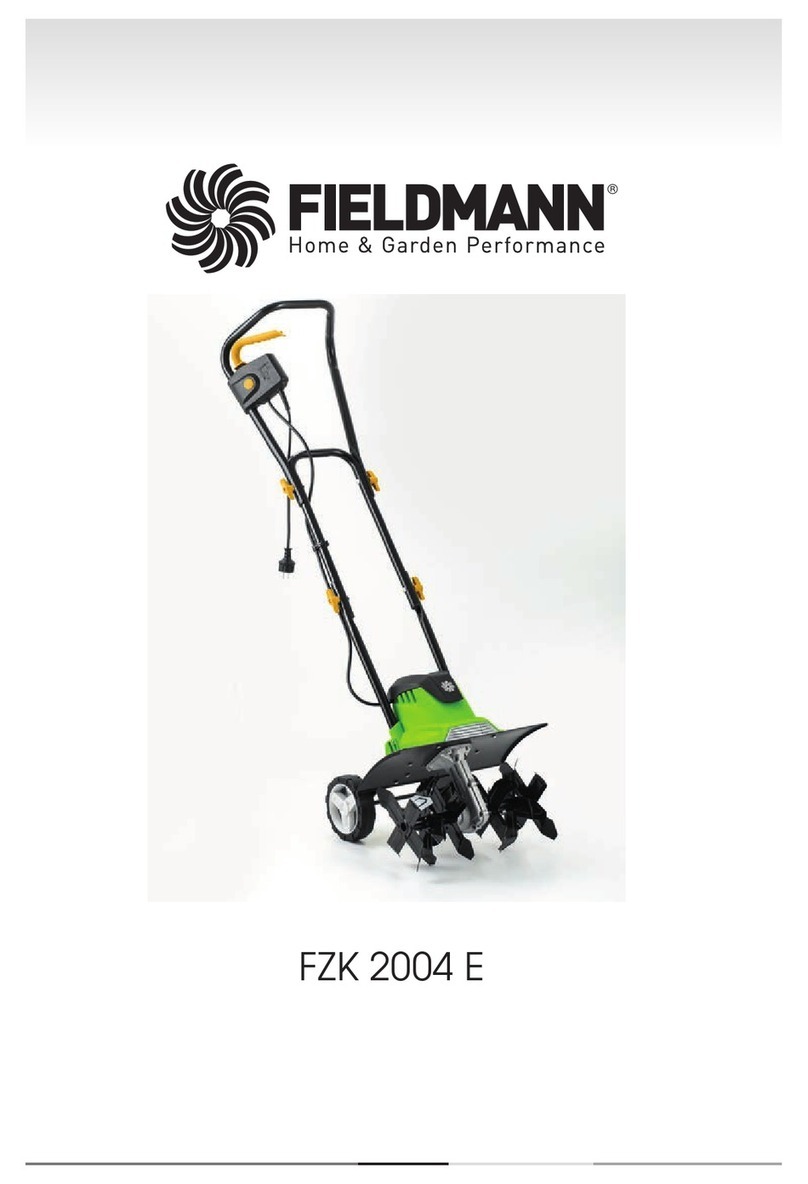
Fieldmann
Fieldmann FZK 2004 E manual
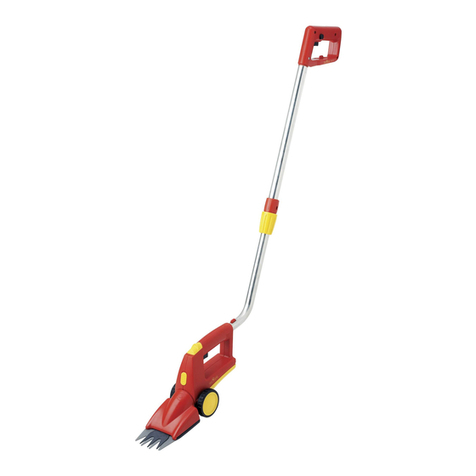
Wolf Garten
Wolf Garten Li-Ion Power 60 Original operating instructions

Rowlinson Garden Products
Rowlinson Garden Products Shiplap Patio Chest Assembly instructions
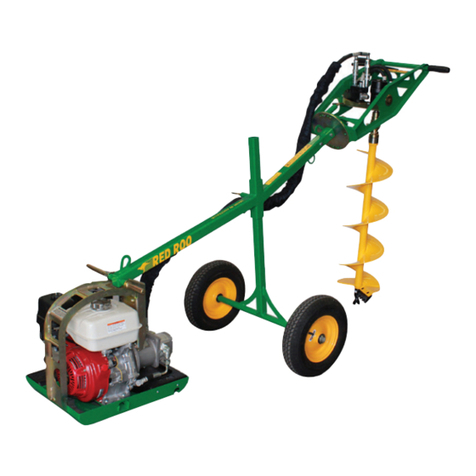
red roo
red roo DHS9-5 operating instructions

Worx
Worx WG801E manual
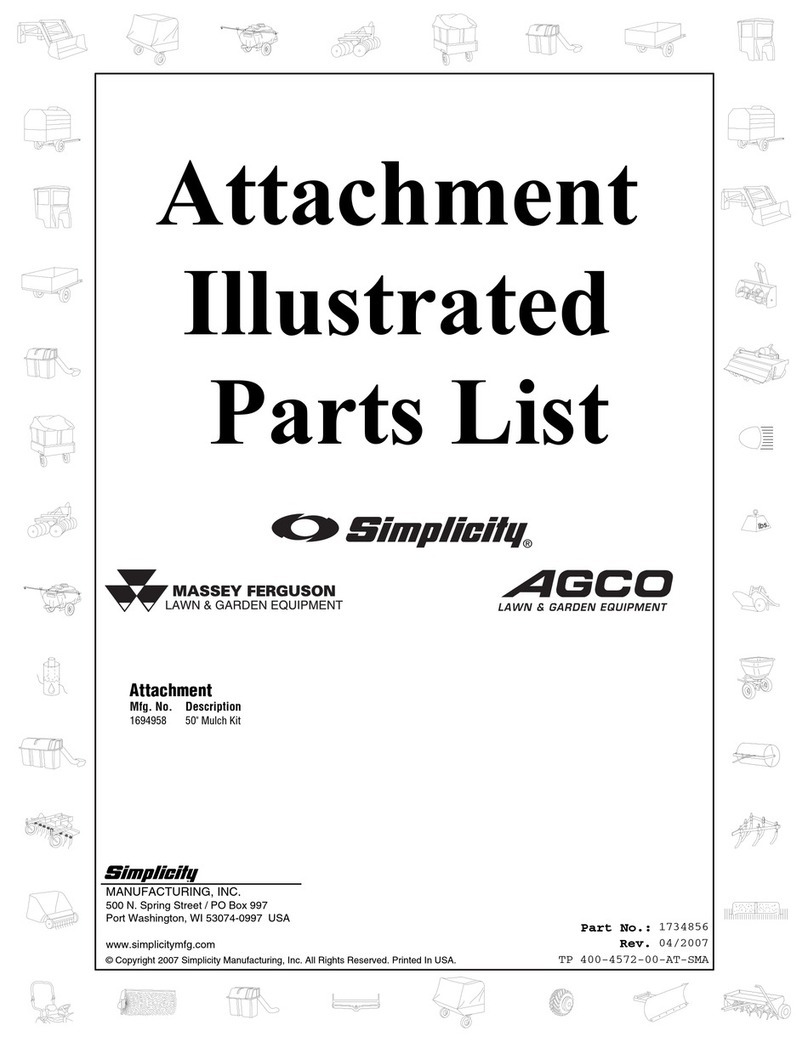
Simplicity
Simplicity 4572 Illustrated parts list

